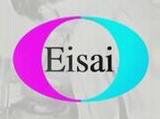香港玛丽女王医院进行的研究显示,以慢性乙肝患者的性别、年龄、乙肝病毒(HBV)DNA水平、核启动子突变和肝硬化等为基础的评分系统 (GAGHCC),可有效预测患者5年和10年的肝细胞肝癌(HCC)发生危险。该研究发表于《肝脏病学杂志》(Journal of Hepatology 2009,50:80)。
820例慢性乙肝患者接受的平均为期76.8个月的随访显示,经组织学或甲胎蛋白联合影像学检查证实的5年和10年HCC患病率分别为4.4%和6.3%。
多因素分析显示,男性[相对危险(RR)为2.98,P=0.025]、年龄增加(RR=1.07,P< 0.001)、HBV DNA水平高(RR=1.28,P=0.02)、核启动子突变(RR=3.66,P=0.007)及存在肝硬化(RR=7.31,P< 0.001)是发生HCC的独立危险因素。
综合上述因素建立一个评分系统(并在验证人群中验证)预测HCC 5年和10年发生危险的敏感性>84%,特异性>76%,5年和10年预测的曲线下面积分别为0.88和0.98。评分临界点为101分,如果患者评分超过101分,其HCC危险将呈指数级升高。
该评分系统可用于甄别哪些是需要筛查和治疗的高危慢性乙肝患者。
美国国立卫生研究院科赫(Koh)和梁(Liang)认为,香港这项长达10年的研究建立了一个有效的HCC 5年和10年发病危险预测评分系统,该系统有助于HCC高危人群的识别。
但该研究还存在一些不足,如研究中仅40例患者最终患HCC,这对该评分系统有一定影响。另外,该研究所纳入的均为中国人,因此,该评分系统是否适用于其他种族的人群尚待研究。(生物谷Bioon.com)
原始出处:
Journal of Hepatology,doi:10.1016/j.jhep.2008.07.023 ,Man-Fung Yuen,Ching-Lung Lai
Independent risk factors and predictive score for the development of hepatocellular carcinoma in chronic hepatitis B
Man-Fung Yuen1, , , Yasuhito Tanaka2, Daniel Yee-Tak Fong3, James Fung1, Danny Ka-Ho Wong1, John Chi-Hang Yuen1, David Yiu-Kuen But1, Annie On-On Chan1, Benjamin Chun-Yu Wong1, Masashi Mizokami2 and Ching-Lung Lai1
1Department of Medicine, The University of Hong Kong, Queen Mary Hospital, Pokfulam Road, Hong Kong
2Department of Clinical Molecular Informative Medicine, Nagoya City University Graduate School of Medical Sciences, Nagoya, Japan
3Department of Nursing Studies, The University of Hong Kong, Queen Mary Hospital, Hong Kong
Abstract
Background/Aims To determine whether gender, age, hepatitis B virus genotype, core promoter and precore mutations, HBeAg/ anti-HBe status, HBV DNA, ALT levels and cirrhosis on presentation were independent risk factors and derive a novel risk score for the development of HCC.
Methods CHB patients (820) were followed up (mean duration 76.8 months) for the occurrence of HCC.
Results The 5- and 10-year prevalence of HCC were 4.4% and 6.3%, respectively. Cox regression analysis showed that male gender (p = 0.025, RR 2.98), increasing age (p < 0.001, RR 1.07), higher HBV DNA levels (p = 0.02, RR 1.28), core promoter mutations (p = 0.007, RR 3.66), and presence of cirrhosis (p < 0.001, RR 7.31) were independent risks for the development of HCC. A risk score was derived and validated with sensitivity > 84% and specificity > 76% to predict the 5- and 10- year risks for the development of HCC. The AUC for the 5- and 10-year prediction were 0.88 and 0.89, respectively.
Conclusions The risk score, based on age, gender, HBV DNA levels, core promoter mutations and cirrhosis, can estimate the chance of development of HCC in 5 and 10 years after presentation. It can be used to identify high-risk CHB patients for treatment and screening of HCC.
















